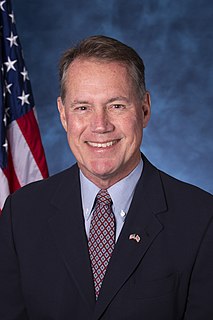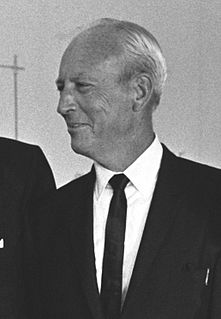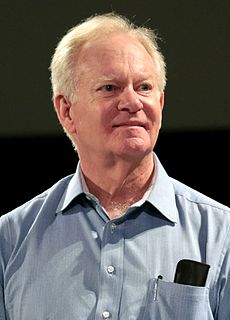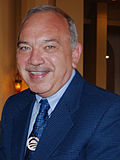
Edward Espenett Case is an American Democratic politician who is currently the U.S. Representative for Hawaii's 1st congressional district, which covers the urban core of Honolulu. He previously represented the 2nd district, which covers the rest of the state, from 2002 to 2007.

Mazie Keiko Hirono is a Japanese-born American politician serving since 2013 as the junior United States Senator from Hawaii. She is a member of the Democratic Party. Prior to her career in the Senate, Hirono served as a member of the Hawaii House of Representatives from 1981 to 1995 and as Hawaii's ninth lieutenant governor from 1994 to 2002 under Ben Cayetano. The Democratic nominee for Governor of Hawaii in 2002, Hirono was defeated by Republican Linda Lingle. From 2007 to 2013, she served as a member of the United States House of Representatives for Hawaii's 2nd congressional district.

The 1976 United States Senate elections was an election for the United States Senate that coincided with Democratic Jimmy Carter's presidential election and the United States Bicentennial celebration. Although almost half of the seats decided in this election changed parties, Carter's narrow victory did not provide coattails for the Democrats, and the balance of the chamber remained the same.

The 1998 Massachusetts gubernatorial election was held on November 3, 1998. Acting Governor Paul Cellucci was elected to his first term as Governor of Massachusetts.

The 2010 South Carolina gubernatorial election took place on November 2, 2010. Incumbent Republican Governor Mark Sanford was term limited and unable to seek re-election. Primary elections took place on June 8, 2010 and a runoff election, as was necessary on the Republican side, was held two weeks later on June 22.

The Hawaii gubernatorial election of 2010 was held on November 2, 2010 to elect the next Governor and Lieutenant Governor of Hawaii. The winning candidates served a four-year term from 2010 to 2014. Incumbent Republican Governor Linda Lingle was term-limited in 2010 and not eligible to run for re-election. Former congressman Neil Abercrombie was declared the winner, defeating lieutenant governor Duke Aiona. Abercrombie was sworn in as the state's seventh Governor on December 6, 2010.

The 1994 Hawaii gubernatorial election was held on November 3, 1994. Incumbent Democratic Governor of Hawaii John D. Waihee III was prevented from seeking a third term as Governor due to term limits, creating an open seat. Lieutenant Governor Ben Cayetano emerged from a crowded primary to become the Democratic nominee, facing off against former Administrator of the Small Business Administration Pat Saiki, the Republican nominee and Honolulu Mayor Frank Fasi, who ran as the Best Party of Hawaii's nominee. In a very close election, Cayetano narrowly edged out Fasi, who placed second, and Saiki, who placed third, winning only a plurality of the vote. Fasi's performance was notable in that it was the best performance by a third party gubernatorial candidate in Hawaii's history.

The 2012 United States Senate election in Hawaii took place on November 6, 2012, concurrently with the 2012 U.S. presidential election as well as other elections to the United States Senate and House of Representatives and various state and local elections. Incumbent Democratic U.S. Senator Daniel Akaka decided to retire instead of running for re-election to a fourth term. Democratic Congresswoman Mazie Hirono defeated former Hawaii Governor Linda Lingle in a rematch of the 2002 Hawaii gubernatorial election.

The 2014 Hawaii gubernatorial election took place on November 4, 2014, to elect the Governor of Hawaii, concurrently with a special election to Hawaii's Class III Senate Seat, as well as other elections to the United States Senate in other states and elections to the United States House of Representatives and various state and local elections.

The 1959 Hawaii gubernatorial election was Hawaii's first gubernatorial election. The election was held on July 28, 1959; one month after Hawaiians had voted for statehood in accordance with the Hawaii Admission Act and one month before admission as the 50th state on August 21, 1959.

The 1962 Hawaii gubernatorial election was Hawaii's second gubernatorial election. The election was held on November 6, 1962, and resulted in a victory for the Democratic candidate, former Territorial Delegate John A. Burns over Republican William F. Quinn, the incumbent Governor of Hawaii. The election was a rematch between the candidates of the previous election, with the outcome reversed. Burns received more votes than Quinn in every county in the state.

The 1966 Hawaii gubernatorial election was Hawaii's third gubernatorial election. The election was held on November 8, 1966, and resulted in a victory for the Democratic candidate, incumbent Governor of Hawaii John A. Burns over Republican candidate, State Senator Randolph Crossley. Despite the close race, Burns received more votes than Crossley in every county in the state except Honolulu, which Crossley won by less than one percentage point.

The 1970 Hawaii gubernatorial election was Hawaii's fourth gubernatorial election. The election was held on November 3, 1970, and resulted in a victory for the Democratic candidate, incumbent Governor of Hawaii John A. Burns over Republican candidate, Judge Samuel Pailthorpe King. Burns received more votes than King in every county in the state.

The 1974 Hawaii gubernatorial election was Hawaii's fifth gubernatorial election. The election was held on November 5, 1974, and resulted in a victory for the Democratic candidate, Lt. Gov. George Ariyoshi over Republican candidate, former State Senator Randolph Crossley. Ariyoshi received more votes than Crossley in every county in the state.

The 1978 Hawaii gubernatorial election was Hawaii's sixth gubernatorial election. The election was held on November 7, 1978, and resulted in a victory for the Democratic candidate, Governor George Ariyoshi over Republican candidate, State Senator John R. Leopold and three other candidates. Ariyoshi received more votes than any other candidate in every county in the state.

The 1982 Hawaii gubernatorial election was Hawaii's seventh gubernatorial election. The election was held on November 2, 1982, and resulted in a victory for the Democratic candidate, Governor George Ariyoshi over Frank Fasi, running as an Independent Democrat, and the Republican candidate, State Senator D. G. Anderson. Ariyoshi received more votes than any other candidate in every county in the state.

The 1986 Hawaii gubernatorial election was Hawaii's eighth gubernatorial election. The election was held on November 4, 1986, and resulted in a victory for the Democratic candidate, Lt. Gov. John D. Waihee III over the Republican candidate, State Senator D. G. Anderson. Waihee received more votes than Anderson in every county in the state.

The 2014 United States House of Representatives elections in Hawaii were held on Tuesday, November 4, 2014 to elect the two U.S. Representatives from the state of Hawaii, one from each of the state's two congressional districts. The elections coincided with the elections of other federal and state offices, including an election for Governor of Hawaii and a special election to the United States Senate.

The 1990 Arizona gubernatorial election took place on November 6, 1990 for the post of Governor of Arizona. Republican Fife Symington defeated the Democratic nominee and Mayor of Phoenix Terry Goddard. Because no candidate received a majority of votes, a runoff election was held later on February 26, 1991, which Symington also won. This is the only election where Arizona used a runoff election.

The 2018 Hawaii gubernatorial election took place on November 6, 2018, to elect the Governor of Hawaii and Lieutenant Governor of Hawaii.
























